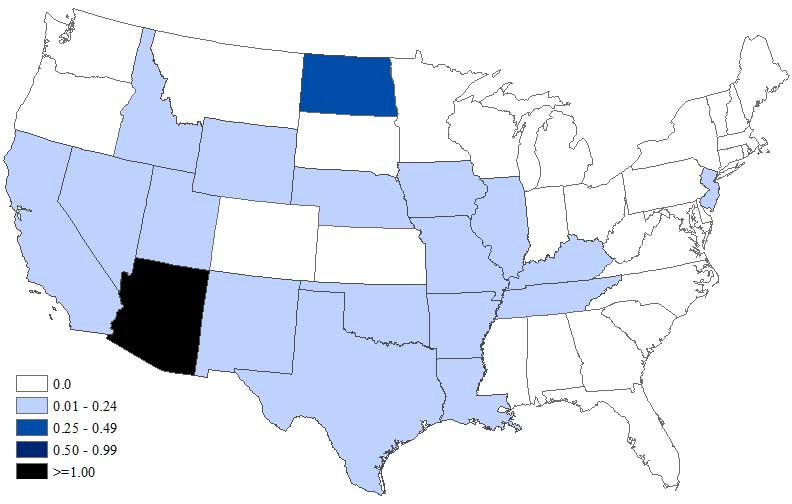Surviving West Nile Virus
by Jim Anderson, Correspondent
A couple of weeks back I wrote an article about West Nile Virus (WNV) that contained a few suggestions on what to do to avoid contacting the dreaded illness.
As I was writing the piece, I wanted acquaint you with the clinical aspects of the disease, but not knowing anyone who survived a bout with West Nile I didn't have any firsthand knowledge of what the infection can do to a human being.
I had no idea that two weeks later I would meet Amber Wolf, a WNV survivor.
Amber is an artist who recently moved from Santa Fe, New Mexico into her home in Squaw Creek Canyon Estates, and I asked her if she would share her thoughts on the disease with others.
"Yes," she said. "Especially if it will help anyone to know if they have the disease and if they seek medical aid quickly (they) may not have to go through the excruciating pain and paralysis that I experienced."
Amber's experience with West Nile all started when she began to notice dead birds near her home in Santa Fe.
"I thought it was strange that so many birds were hitting my windows," she said. "I can't remember all of the birds that were laying around, but I do recall there were dead finches, flickers and hummingbirds around my house."
Being an outdoor person and canoeist, Amber did not especially recall being bitten by mosquitoes; they just go with her lifestyle.
"There are so many historical acequias carrying slow-moving irrigation water, mosquitoes aren't hurting for places to breed," she said.
The dead birds began turning up the last part of May 2003.
One morning, in the middle of June, Amber woke up with an intense headache and fever, accompanied by muscle and joint pain.
Being prone to spells of mild fever, she didn't think much about it, however, and thought, "Oh, well, maybe the other stuff just goes with the fever..." and let it go at that.
"That's when I should have called the doctor," she said.
Neither the headache nor the fever went away.
Within days other problems appeared; a rash spread over her chest and arms and severe neck pains began.
A week later she was suffering from even more intense headaches and her "mild" fever was at 101. Amber thought she might have a sinus infection and continued to put up with the pain and hoped things would get better soon.
A week later Amber's headache went to critical proportions and for two days, she had red, bloodshot eyes, and also noticed her lymph glands were swollen and painful.
Then real disaster struck; she woke one morning to discover she was paralyzed on her upper torso.
"It felt as though my body wasn't there anymore," she said, "but the ungodly headaches and neck pains went on so bad that I wanted to stop living."
She finally got to the hospital and was diagnosed with WNV.
If there was any "good news" at this point, it was that Amber had escaped the horrors of meningitis. She was still paralyzed, there were no known medication she could take to help her through her paralysis and unbearable headaches; and she knew it was up to her own body and immune system to either get her well -- or...
Two weeks later Amber woke in the morning to the sweet feeling of life returning to her hands and arms, and she regained her ability to move her upper torso.
The headaches were on the wane, the rash was gone, and her lymph glands had gone down to normal.
But what was left was a woman with very little strength to move; all she wanted to do was sleep.
Although she was past the critical phase of the WNV and on the mend, she had very little appetite and felt intense fatigue all day long.
Today, a little over year from when she was so ill, Amber knows she is a very fortunate woman.
Many of the patients she shared her time with in the hospital in Santa Fe are still there, paralyzed from head to toe and without any hope of coming out of their dilemma.
Amber says there are three things you should look for if you're suspicious of WNV infection:
• Fever and intense head and neck ache that lasts more than 24 hours.
• Swollen lymph glands or rash.
If these symptoms persist, call your doctor immediately. Take it from a woman who knows.


No comments:
Post a Comment